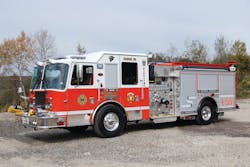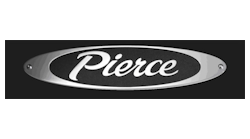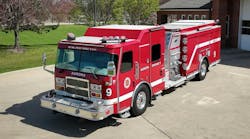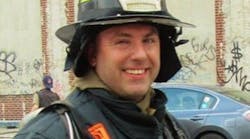The past few installments of The Apparatus Architect reviewed some history of cab design and the most recent innovations that have led to improved vehicle performance and increased safety for personnel. Given current economic conditions, many fire departments are unable to take advantage of these technological advances as budgets for capital projects have been reduced to the point where new apparatus purchases are being put off. On the positive side, some departments have upgraded their fleets with single- or multiple-unit purchases by using alternative funding methods and strategic planning to promote the need for new apparatus.
The Freeland Fire Department in Luzerne County, PA, protects the Borough of Freeland and surrounding communities with a fleet of two engines, a ladder truck and a utility support unit. The department was formed in 1989 as a result of a consolidation of two fire companies that dated back to 1883. The department has in the past operated custom-chassis apparatus, including several four-wheel-drive pumpers that provided access to the hilly terrain areas in the first-due area during winter weather.
The department relies heavily on local fundraising to support operations and apparatus purchases. Unlike many locations where the fire department is fully tax supported, the volunteer members in Freeland are justifiably proud of their apparatus, which are largely funded from contributions and fundraising activities. These efforts have resulted in well-designed engine apparatus that have provided many years of reliable service. As an example, the new Engine 55, a 2011 KME Predator Panther pumper, replaced a 1974 FWD pumper that had more fire-attack capability than many new apparatus.
Years of Planning
The apparatus fleet is under the guidance of Chief Engineer Cal Herring, who is responsible for the maintenance and testing of Freeland’s units. Over the years, the department has operated four different used aerial ladder units that were extensively rebuilt and modified for its use. The new Engine 55 is a result of several years of planning with the department’s apparatus committee, after visiting several manufacturers’ facilities and evaluating new apparatus deliveries in the area.
Particular attention was made to reviewing the fire pump piping arrangement with a 2,000-gpm fire pump to ensure that each of the nine pre-connected attack lines would provide the required gpm flow with minimal friction loss. Before placing the engine into service, each discharge was flow tested using department hose and smooth-bore nozzles ranging in size from one inch to 1¼ inch to verify friction loss and required pump pressure.
Engine 55 is built on a wheelbase of 193 inches with an overall length of 32 feet, five inches and carries a 750-gallon water tank. Coordination between the apparatus committee and KME provided for a well-designed engine that carries a full complement of engine company equipment, including a pre-piped Stang gun and two tailboard-mounted portable ground monitors. The Freeland Fire Department uses two-inch hose for attack lines, with Engine 55 carrying 1,700 feet of five-inch supply line together with several 150-foot,three-inch setback lines equipped with a water thief.
Resources Combined
Located in Lancaster County, PA, the Manheim Township Fire Rescue Department was formed in June 2007 combining the resources of three independent fire companies. Before consolidation of the Eden, Neffsville and Southern Manheim fire companies, each organization purchased new apparatus with a large amount of private fundraising needed for each unit. A strategic plan was developed and approved in August 2009 that in part laid the groundwork for an initiative to provide for new pumpers that would be set up identically, including a dedicated reserve engine.
Under the direction of Chief Rick Kane, Manheim Fire Rescue formed an apparatus committee with members from each of the three fire companies and representation from several neighboring departments that expressed interest in purchasing a standard engine apparatus. Over several months, the committee members met to determine the major features to be incorporated into the new standard-design engine and visited departments in Maryland, Pennsylvania and Virginia that had taken delivery of new units. The result of the process was choosing Pierce Manufacturing and its local representative, Glick Fire Equipment Co., to provide the new engines using the State of Pennsylvania Costars cooperative-purchasing program.
In addition to the four new engines, the strategic plan called for the acquisition of two mini-squad units, one to be equipped with a small engine-driven fire pump and tank. These units, built on Ford F-550 chassis, would be assigned to the Eden and Southern Manheim stations to respond to EMS calls and other minor incidents to reduce wear and tear on engine and ladder apparatus. All six vehicles were acquired using the manufacturer’s leasing program, which enabled the department to take advantage of pre-payment options.
Each pumper was built on a Pierce Arrow XT chassis with a wheelbase of 176½ inches and an overall length of 29 feet, seven inches. Keeping the overall length of the engines was an important component in the overall design, while providing seating for six personnel and equipped with a 2,000-gpm, single-stage pump and 500-gallon water tank. Safety and maintenance components integrated into the apparatus include independent front suspension, reinforced steel front bumper, cab down-view mirror, chassis lubrication system and cab headset intercom for each seating position.
Each engine is equipped with six pre-connected attack lines, including a 100-foot, 1¾-inch trash line and two crosslay 200-foot, 1¾-inch lines, connected to discharges on the pump panel directly below each line. The rear hosebed was set up to carry 1,200 feet of five-inch supply line, a 400-foot apartment line, a 250-foot, 2½-inch attack line together with a 300-foot, three-inch line used to supply a Blitz Fire monitor. An additional 300-foot, three-inch hose can supply sprinkler connections or be used in conjunction with standpipe packs carried on the right side of the body.
Rotaing Apparatus
These well-designed engines are planned to provide a 15-year life cycle for the department and will initially be rotated every 90 days among the three stations to balance out use due to differences in incident response, with the highest-mileage unit going into reserve status. The Manheim Township Fire Rescue engine apparatus were specifically designed to be structural firefighting units that allow standardized equipment and hoseline locations to greatly enhance safety, training and fireground operations.
Developing the department’s strategic plan enabled the three fire companies to coordinate their efforts in many areas. Under the guidance of Kane and his staff, the companies convinced the township that advancing and improving fire protection could be accomplished with the financial backing of the community. Well-planned and well-executed programs can be achieved despite what may seem to be insurmountable challenges when fire service personnel work together to achieve a common goal. The Manheim Township Fire Rescue Department is an excellent example of what can be achieved in this fashion.
Both the Freeland Fire Department and Manheim Township Fire Rescue set out to design and specify engine apparatus to carry basic equipment, hose and attack lines to produce needed fire flows at various incidents. While combination rescue-engine apparatus may meet the needs of some departments, these two departments developed specifications to provide short-wheelbase engine apparatus with multiple attack lines and enhanced safety components to meet the needs of their response areas.








